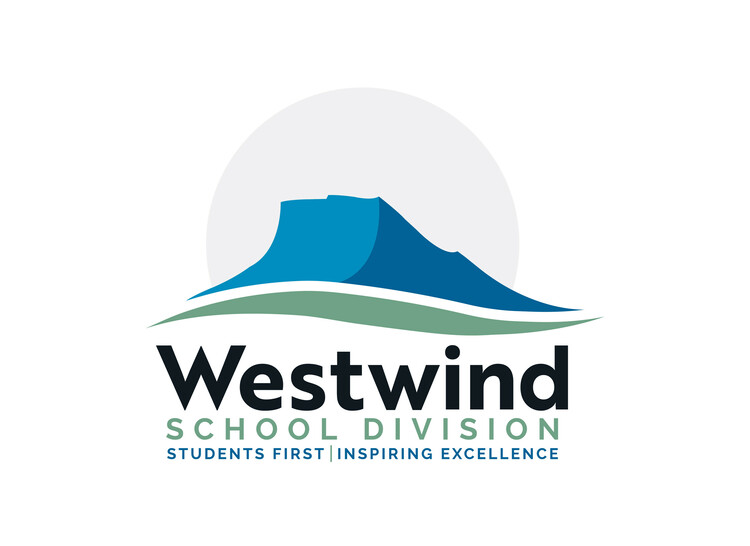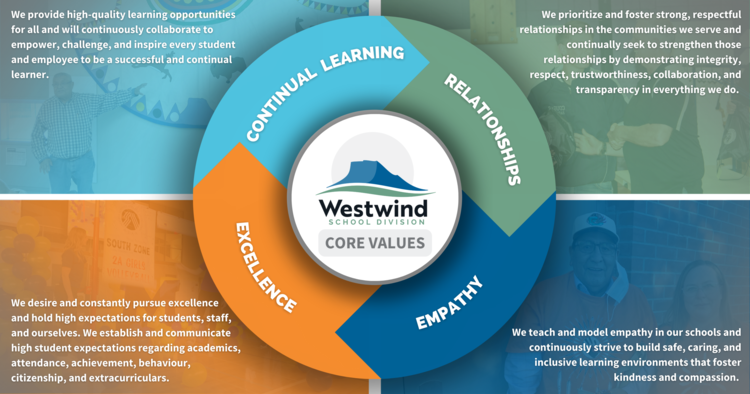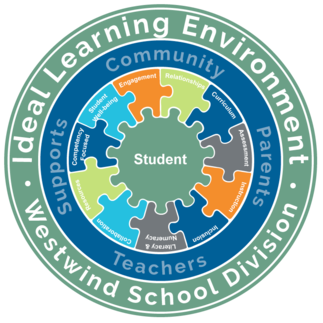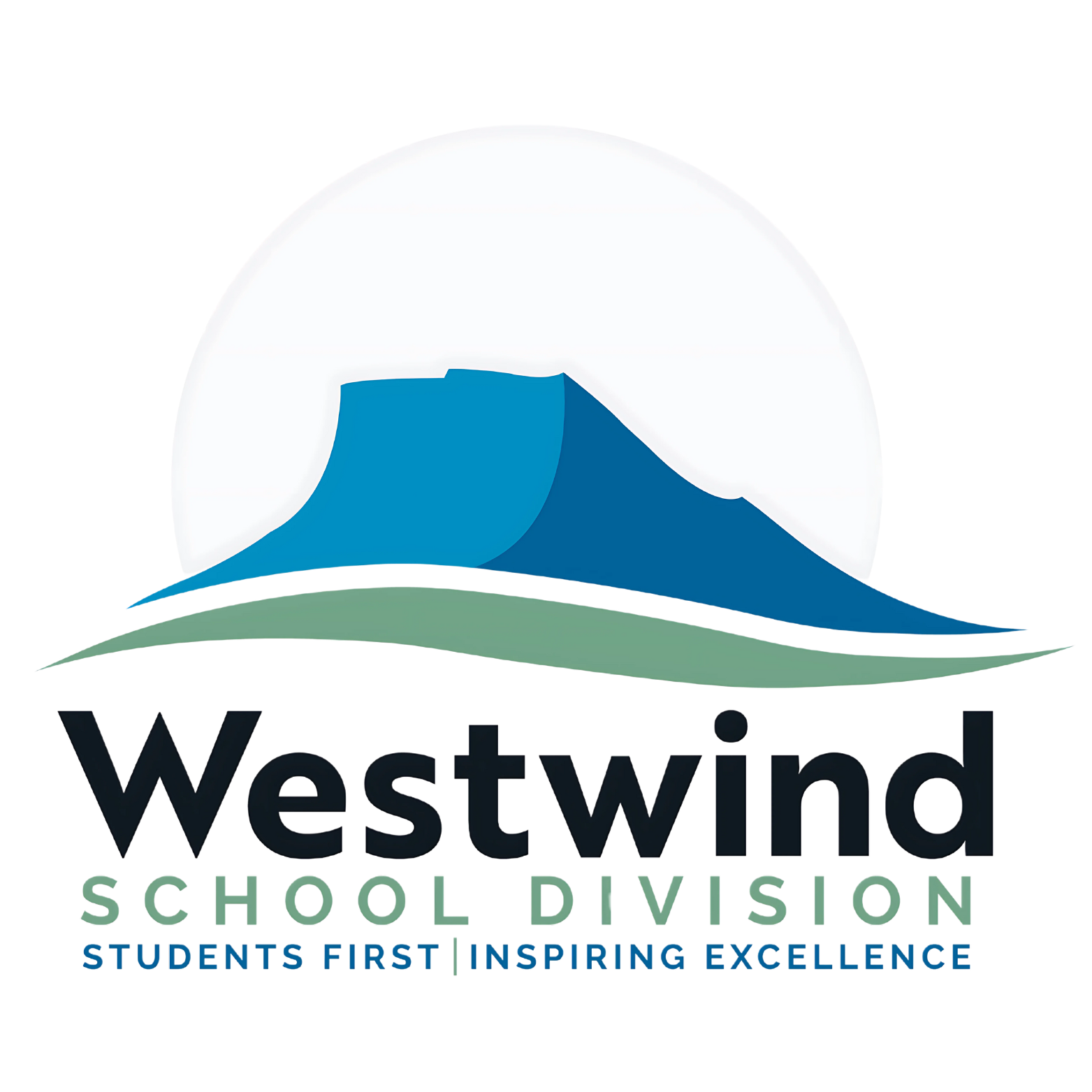
About Westwind School Division
Nestled at the base of the Rocky Mountains in the beautiful southwestern corner of Southern Alberta, Westwind School Division (WSD) is dedicated to creating learning environments that are both engaging and centred around our students. Our mission? To inspire every student to reach their personal best and to create a place where all learners can truly thrive.
Born on September 1, 1994, from the unification of the former Cardston School Division, Stirling School District, and a portion of the County of Warner School Division, our division has become a thriving educational hub where every student is encouraged to reach their personal best every day.
Our division stretches across 66 kilometres from north to south, from the Canada/US border, and spans 109 kilometres from east to west. We are framed by the breathtaking Waterton Lakes National Park, the Waterton River to the west, and a line parallel with the Cardston County Eastern Boundary to the east.
We are the proud educational home to 4,600 students, spread across 13 community schools located in the towns of Cardston, Magrath, and Raymond and the villages and hamlets of Stirling, Glenwood, Hill Spring, Mountain View, Del Bonita, Spring Coulee, and Welling. We also serve 19 vibrant colony schools.
Here at Westwind, we believe in building a learning system that is accessible, learner-centred, and collaborative while being accountable, responsive, innovative, fair, and equitable. We are a tight-knit community of engaged learners, all working together to help every student realize their full potential.
Guided by our core values of continual learning, excellence, relationships, and empathy, we offer world-class public education and build strong, respectful relationships in our communities. We value integrity, respect, trustworthiness, and transparency, always working together in a spirit of collaboration.
Our mission, vision, and values aren't just words; they are the compass that guides every decision we make, always pointing us toward what's best for our students. We are here to build trust and enhance the learning experience, ensuring every step we take is in harmony with our goal of nurturing and growing our students' potential.
Westwind School Division will be a collaborative community of engaged learners that inspires all students to realize their full and complete potential.
The mission of Westwind School Division is to foster engaging and student-centred learning environments that will inspire each student to strive for personal excellence and allow all learners to thrive.

Continual Learning: We provide high-quality learning opportunities for all and will continuously collaborate to empower, challenge, and inspire every student and employee to be a successful and continual learner.
Excellence: We desire and constantly pursue excellence and hold high expectations for students, staff, and ourselves. We establish and communicate high student expectations regarding academics, attendance, achievement, behaviour, citizenship, and extracurriculars.
Relationships: We prioritize and foster strong, respectful relationships in the communities we serve and continually seek to strengthen those relationships by demonstrating integrity, respect, trustworthiness, collaboration, and transparency in everything we do.
Empathy: We teach and model empathy in our schools and continuously strive to build safe, caring, and inclusive learning environments that foster kindness and compassion.
Our mission, vision, and values guide our behaviour, structure our operations and shape our Division strategies. For every decision we make, we will hold ourselves accountable and ask:
- Is this what’s best for our students?
- Will this help us build trust and improve relationships?
- How will this decision further education, inform practice and enhance learning?

In early 2018, Westwind School Division created a new mission and vision. The vision is that Westwind School Division will be a collaborative community of engaged learners that inspires all students to realize their full and complete potential. The mission of Westwind School Division is to foster engaging and student-centred learning environments that will inspire each student to strive for personal excellence and allow learners to thrive. As we work to bring these statements to realization, we wanted to define an ideal student-centred learning environment.
Research shows the importance of trust, healthy dialogue, commitment to a common goal, holding each other accountable and attention to results are in order for a team to work effectively together. For several years, Westwind School Division has engaged in professional development that has improved our ability to help students increased their achievement. These professional development initiatives have occurred in many different areas. The ideal learning environment is meant to answer the question, "What are we working towards?" It provides our division with a common goal that we are all working towards for our students.
The Ideal Learning Environment will be used to guide our decision-making practices. As we strive to always answer "yes" to, "Is this in the best interest of students?", this model helps us to know what is included within that answer. In the classroom, as we look to improve our practice, this model can serve as a reminder of all the areas that we need to consider when designing learning.




